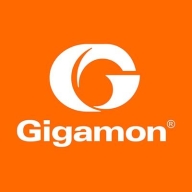

Palo Alto Networks WildFire and Gigamon Deep Observability Pipeline compete in the network security and visibility category. WildFire has the upper hand with its comprehensive threat prevention capabilities and seamless integration within Palo Alto's ecosystem.
Features: WildFire offers dynamic analysis, credential-based attack prevention, and deep network visibility, integrating effectively with Palo Alto's broader ecosystem. Gigamon emphasizes network visibility with features like packet filtering, encryption, and performance enhancement through streamlined processes.
Room for Improvement: WildFire should support more file types on-premises, reduce cloud dependency, and increase integration options. Pricing and configuration complexities also need addressing. Gigamon must improve network traffic flow visibility, particularly in cloud environments, to lessen tool dependency.
Ease of Deployment and Customer Service: WildFire is praised for its varied deployment models across on-premises and cloud settings, though some deployment challenges exist. Its customer service is generally well-rated with occasional support quality issues. Gigamon's deployment is effective in hybrid and on-premises environments, and customer service is well-regarded.
Pricing and ROI: WildFire is often considered expensive but offers significant security benefits, providing substantial ROI and resource-saving. Its free version assists with trial experiences. Gigamon is similarly priced, focusing on network visibility, catering to those prioritizing performance optimization over direct threat prevention.
The service generates a low rate of false positives, reducing the overhead of managing false positive events.
There is a lack of SLA adherence, and third-party partners do not provide prompt responses.
The service response times are aligned with standards, responding within a few hours based on the problem's criticality.
Wildfire is highly scalable.
The dashboard should provide better visibility, especially in showing how many files are sent to Wildfire and their findings.
I would rate it an eight out of ten in terms of affordability.
The most valuable feature of Wildfire is its sandboxing capability for examining suspicious files or locations.


Gigamon Deep Observability Pipeline is a comprehensive network visibility solution that provides real-time insights into network traffic. It offers SSL inspection and mobile network monitoring for traffic monitoring purposes. The solution optimizes networks, aids in security inspection, and improves firewall performance. It is praised for its performance, power, straightforward integration, stability, and ease of initial setup.
With Gigamon, organizations can gain complete visibility into their network traffic, identify potential threats, and take proactive measures to prevent them. The solution is ideal for organizations of all sizes, including enterprises, service providers, and government agencies.
Palo Alto Networks WildFire is a highly effective cloud-based advanced threat protection (ATP) solution that organizations in a wide variety of fields trust to help them keep safe from digital threats. It is designed to enable businesses to confront even the most evasive threats and resolve them. It combines many techniques to maximize the level of threat protection available to users.
Palo Alto Networks WildFire Benefits
Some of the ways that organizations can benefit by choosing to deploy WildFire include:
Proactive real-time threat prevention. Organizations that utilize WildFire can take a proactive approach to their network security. Wildfire’s security scanning software is supported by powerful automation that enables it to run 180 times faster than other similar solutions. It also leverages machine learning to spot and address two times more malware monthly than its competitors. Users can solve issues as they arise, which prevents them from suffering severe harm.
A holistic approach to security. WildFire leverages many of the security features and characteristics that can be found in some of the most effective security solutions in a way that provides users with a powerful protective blanket. It combines such things as machine learning, dynamic and static analysis, and a custom-built analysis environment, and enables users to cover many different potential avenues of attack. In this way, organizations can easily detect and prevent even the most sophisticated threats from harming them.
Reduce overhead costs. Using WildFire cuts the expenses that a business incurs. Its architecture is based in the cloud and, as a result, users do not have to purchase hardware to run it. Additionally, those users do not have to pay anything more than a product subscription fee. They can scale it up as they wish and incur no additional costs.
Palo Alto Networks WildFire Features
Some of the many features WildFire offers include:
Third-party integrations. WildFire gives users access to integrations that can enable them to combine Wildfire’s security suite with outside tools. If an organization thinks that they are missing something, they can easily use Wildfire’s third-party integrations to bolster their capabilities. These integrations can connect to many different types of tools, like security information or event management systems.
URL filtering. Organizations can use a URL filtering feature to safeguard themselves against known threats. When this feature is active, it will scan for traffic coming from specific URLs that are known to be malicious. This keeps them one step ahead of those threats that they know about.
Deep analytics. Wildfire comes with the ability to provide users with a detailed analysis of any threat that it finds across all of their network environments. It gives users insight into everything from their natures to the actions that they have performed.
Reviews from Real Users
WildFire is a solution that stands out when compared to its primary competitors. Two major advantages that it offers are the high speeds at which it can analyze network traffic for threats and the accuracy with which it can pick out genuine threats from false positives.
Ahmad Z., the principal consultant at Securelytics, writes, “The analysis is very fast. The intermittent is a millisecond and has a speedy response time.”
Christopher B., the senior systems administrator at a government agency, says, “It gives a more accurate assessment of a virus in terms of whether it's truly a virus, malware, or a false positive. We have some legacy software that could pop up as being something that is malware. WildFire goes through and inspects it, and then it comes back and lets us know if it's a false positive. Usually, when it finds out that it's not a virus, it lets us know that it's benign, and it can exclude it from that scan, which means I don't even have to worry about that one popping up anymore.”
We monitor all Advanced Threat Protection (ATP) reviews to prevent fraudulent reviews and keep review quality high. We do not post reviews by company employees or direct competitors. We validate each review for authenticity via cross-reference with LinkedIn, and personal follow-up with the reviewer when necessary.